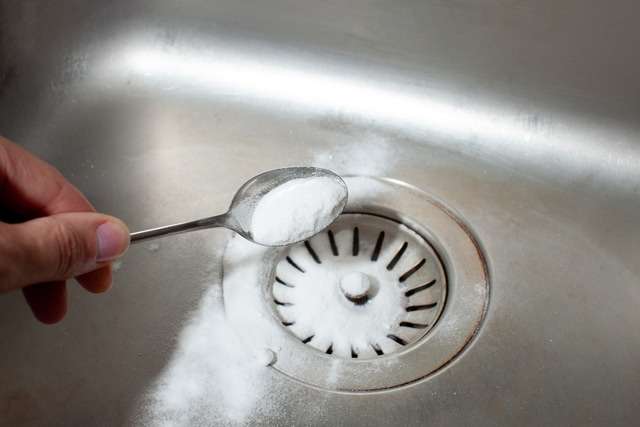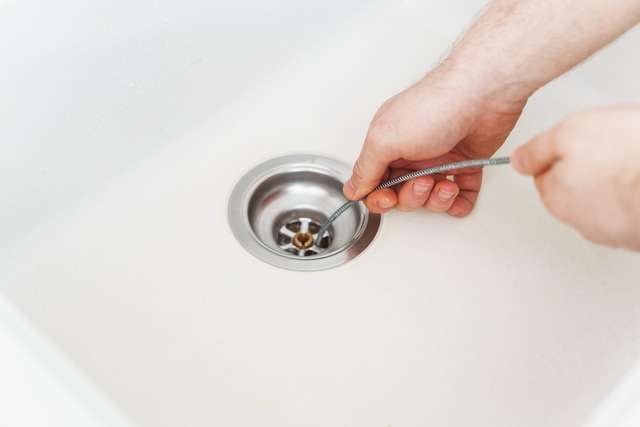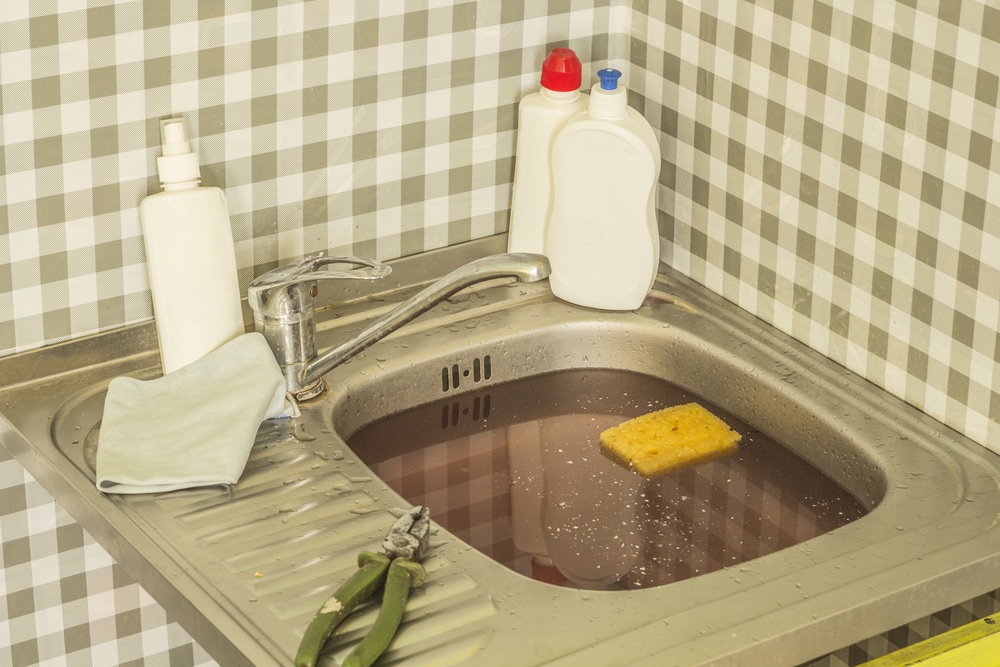Kitchen sink frequently always backed up and won’t drain? Or perhaps, it’s starting to smell a bit like the dinner you had a few weeks ago. No worries!
Here are five DIY fixes that you can try to use to unclog your sink drain before calling in plumber.
1. Boiling Water to the Rescue
The easiest and cheapest of all the DIY fixes is pouring a pot of boiling water directly down the clogged sink.
This method is most suitable for the clogs associated with grease, soap residue, hair, and tepid water and may not be effective against heavy clogs.
Also, do not use this method if you have a porcelain sink or plastic (PVC) pipes.
- First, boil water in a large pot or tea kettle, and remember it has to be boiling water, not hot water.
- When it’s at a rolling boil, carefully carry it over to the clogged sink and pour the water slowly down the drain.
- But be careful not to splash any water as it can lead to burns.
- After pouring, let it take a few minutes to dissolve the clog and if it doesn’t work you can repeat the process a few times.
2. Baking Soda and Vinegar
Baking soda and vinegar are effective alternatives for chemical-based drain cleaners. The fizzy reaction between baking soda and vinegar is vigorous and abrasive enough to dissolve or loosen many stubborn clogs.
- Pour 1 cup of fresh baking soda down the drain, followed by 1 cup of white vinegar, and place the sink hole cover over the drain opening.
- Then wait for about 15 minutes to allow baking soda and vinegar to unclog your drain.
- After that, remove the drain cover and run hot tap water down the drain to clear the clog.

3. Plunge The Sink
When all else fails, this tried-and-true method for dislodging drain clogs often works. However, be sure to use the correct plunger for the appropriate situation!
- First, lift out the removable sink strainer or stopper and fill the sink with several inches of water. This allows the cup of the plunger to form a tight seal.
- Place the cup plunger over the drain opening and be sure to properly form a seal against the surface around the drain.
- Use quick, sharp plunges up and down for about 15 seconds. After that, remove the plunger.
- You may want to use the plunger several times if the clog is really stubborn.
4. Use a Drain Snake
If any of the above methods didn’t work for you, then try a drain snake or sink auger. A drain snake is a flexible auger that is very effective for clearing difficult drain clogs.
- To start, remove the drain stopper and insert the auger cable into the drain opening.
- When the cable touches the clog, pull out about 12 inches more of the cable and tighten the set screw on the auger canisters.
- Turn the crank handle of the auger clockwise while applying moderate pressure on the cable.
- Extend the cable until it breaks through the clog and you’ll feel less resistance once it happens.
- Then retract the cable out of the pipe and flush out the pipe with hot water.
- If you didn’t meet any resistance, then the clog may be further up the pipe in the branch drain.

5. Remove the Drain Trap and Unclog the Branch Pipe
If you suspect the clog is beyond the drain trap, unclogging it will take a fair bit of effort, but is still fairly easy.
- Place a bucket under the trap to catch the water that will come out once you remove the trap.
- Loosen the slip nuts at each end of the trap with tongue-and-groove pliers or a pipe wrench and then, remove the slip nuts and the trap.
- Dump the water in the trap into the bucket.
- After that, insert the auger cable into the horizontal section of the drainpipe, tighten the setscrew, and crank the cable, as before.
- If the end of the cable gets stuck at a pipe bend, cranking the auger and applying pressure will help get it past the bend.
- You can extend the cable farther into the drain until you pass through the clog, then retract the cable.
- Then, replace the drain trap and flush the drain with hot water to clear any remaining debris.
How to Prevent Clog Buildup?
In medicine, the saying “an ounce of prevention is worth a pound of cure” holds true in plumbing and can save you both time and money.
Kitchen drain clogs occur due to the build up of food particles, such as grains, tea leaves, coffee, and eggs. Hot liquids like bacon grease, chicken grease, and foreign objects like oil, hair, jewelry and small toy parts can accumulate and clog your kitchen sink. A garbage disposal malfunction could also be the culprit if you have one.
By taking the necessary measures to prevent objects from entering the drain, you can keep your kitchen sink clog free.
Here are some tips to avoid clogging your sinks:
- Don’t overload the disposal and put any inorganic matter down the drain.
- Don’t put grease, oil, or coffee grounds down the drain. Collect them in disposable containers or bags and remove them to an outdoor garbage bin.
- Freeze a mixture of half vinegar and half water into ice cubes. Periodically drop one or two of these into the garbage disposal to keep it fresh.
- Run hot water from the tap after each kitchen sink used to help keep the drain cleared.
Kitchen Sink Drain Cleaning With True Service Plumbing
If the clog you are currently experiencing is too much for you to handle, or the methods above were ineffective, best to call in a professional plumber.
Our licensed plumbers will assess your home’s plumbing system and determine the root cause of your issue, and perform the services necessary to get your water flowing again.
From clogged kitchen sinks, plumbing fixture installation and replacement, or a total kitchen renovation, True Service Plumbing has your back when it comes to all things plumbing.
Contact True Service Plumbing today to schedule a free estimate and consultation.


